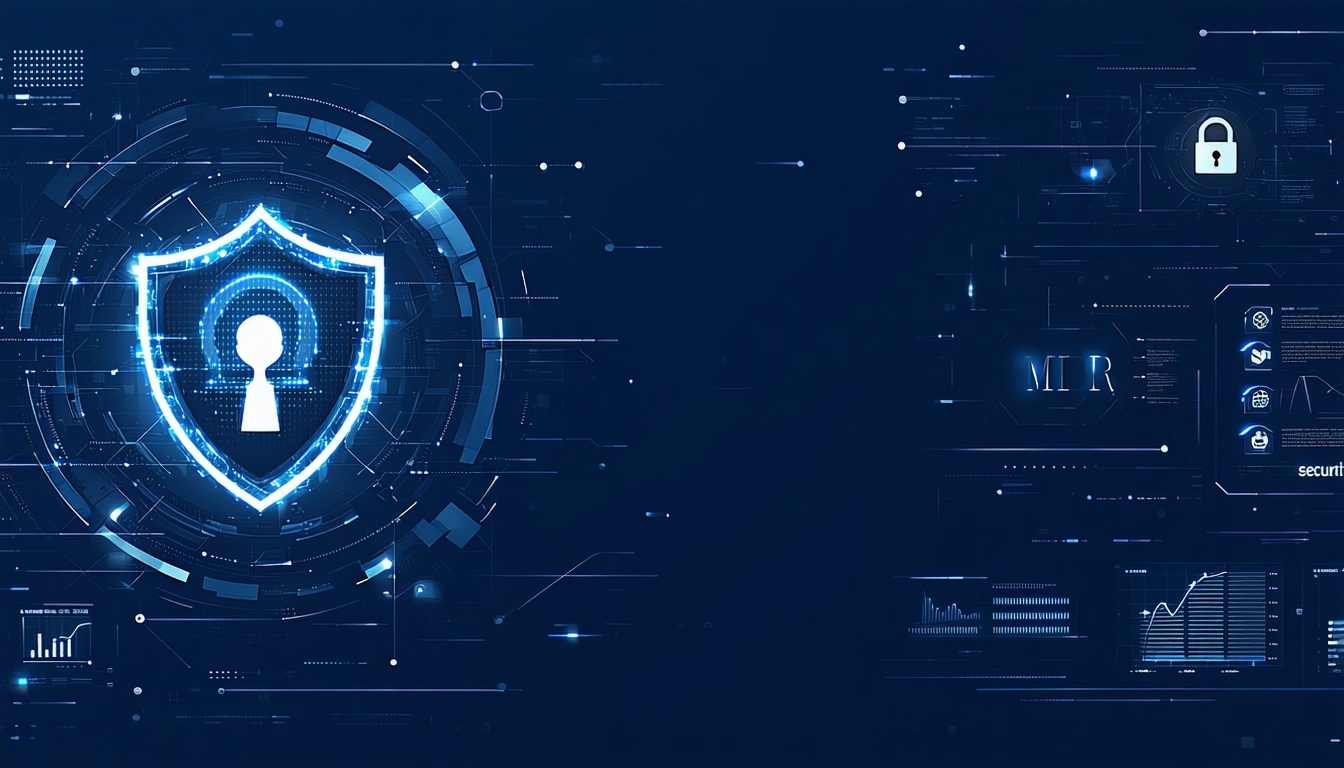Managed Detection and Response (MDR) security solutions play a vital role in healthcare cybersecurity by offering proactive threat detection and rapid incident response. Yet rising volumes of alerts can overwhelm security analysts, risking patient safety and data integrity. Healthcare organizations that fail to address alert fatigue may encounter delayed responses or missed critical threats. The following analysis explores strategies and best practices that healthcare teams have adopted to reduce MDR alert fatigue while maintaining robust security postures.
As medical IoT devices proliferate, networks have become more complex. Data from infusion pumps, imaging systems, and patient monitors feed into security platforms, further increasing alert volumes. Recent incidents, ranging from systemic ransomware attacks to targeted phishing campaigns, have demonstrated the need for vigilant monitoring. Phishing remains the most common initial compromise vector, often leading to broader security incidents (SBS Cyber Security).
When evaluating potential partners, IT leaders may review managed detection and response companies and weigh fatigue reduction measures alongside detection accuracy. Aligning MDR alerts with clinical workflows and regulatory requirements such as those outlined on the mdr compliance page is essential for HIPAA-regulated environments.
Understanding Alert Fatigue
Defining Alert Fatigue
Alert fatigue occurs when security analysts receive more notifications than they can effectively investigate and remediate. Frequent false positives or low-priority alerts can desensitize teams, leading to oversight of genuine threats. In healthcare settings, where rapid response to incidents is critical, alert fatigue poses unique risks to patient care and operational continuity.
Impact on Healthcare Teams
In hospitals and clinics, security operations centers (SOCs) managing medical devices, electronic health record systems, and networked imaging equipment can generate thousands of alerts per day. Overextended teams may deprioritize or dismiss notifications, increasing the likelihood of undetected breaches. In one mid-sized regional health system, an average of 1,200 alerts per day led to a backlog of pending investigations, delaying critical incident handling by up to four hours. A recent study found that 75% of cybersecurity professionals view the threat landscape as more challenging than in the past five years, with just 52% confident in their organization’s tools and personnel to respond effectively (Dewpoint).
Compliance And Reporting
Healthcare organizations must maintain detailed audit trails and comply with regulations such as HIPAA and HITECH. Excessive, unmanaged alerts can hinder timely incident reporting and forensic analysis. MDR platforms with built-in compliance reporting modules automate log aggregation and support standardized reporting workflows, reducing administrative burden and ensuring readiness for audits.
Identifying Root Causes
The following table outlines common drivers of alert fatigue and potential mitigation strategies in healthcare environments:
| Root Cause | Effect on Teams | Mitigation Strategy |
|---|---|---|
| High Alert Volume | Missed critical threats, decision fatigue | Implement alert triage and threshold tuning |
| Manual Triage Overload | Slow incident response, inconsistent outcomes | Automate threat hunting workflows |
| Limited Staff Resources | Burnout, gaps in coverage | Leverage outsourced 24/7 MDR monitoring |
Overwhelming Alert Volume
Healthcare networks can produce more than 10,000 alerts per day, making manual filtering infeasible. That volume can obscure genuine threats and create false windows of safety. Organizations may adopt selective filtering, threshold adjustments, and dynamic alert suppression to focus on high-priority events.
Manual Triage Limitations
Reliance on human-driven triage can introduce variability and delay. Analysts may spend up to 60% of their time validating benign events rather than pursuing high-risk investigations. This misallocation increases mean time to detect (MTTD) and mean time to respond (MTTR).
Staffing Constraints And Coverage
Budget and hiring challenges in the healthcare sector can limit SOC staffing levels. Industry data indicates that building an in-house security operations center can cost millions annually. Organizations may struggle to maintain 24/7 coverage, resulting in gaps and delayed incident handling. Partnering with third-party providers ensures continuous monitoring without the overhead of recruiting and retaining specialized staff (SISA InfoSec).
Leveraging Proactive Detection
Automated Threat Hunting
Proactive threat hunting applies analytics and artificial intelligence to identify unusual patterns before they escalate. This approach offers continuous, autonomous monitoring capabilities instead of reactive, manual processes (EM360Tech). Common benefits include:
- Continuous anomaly detection across endpoints and network segments
- AI-driven correlation of threat indicators and behavioral analytics
- Scheduled hunts targeting hospital-specific threat vectors
Custom Rule Sets
Customized detection rules allow organizations to align alerts with their specific risk profile. Examples include:
- Firmware integrity monitoring for medical devices
- Access pattern analysis for electronic health record systems
- Detection of business email compromise patterns and phishing indicators
Providers may offer a configurable rules engine, reducing unnecessary noise and optimizing security resources (Arctic Wolf). When assessing integration needs, IT leaders may reference comparisons such as mdr vs edr and mdr vs siem to ensure complementary deployment.
Threat Intelligence Integration
Incorporating external threat intelligence feeds tailored to healthcare environments enhances detection accuracy. Providers may integrate real-time indicators of compromise (IoCs) from public and private sources, including healthcare sector-specific sharing groups. This enrichment helps prioritize emerging threats such as targeted ransomware variants and supply chain attacks on medical equipment.
Streamlining Incident Response
Prioritization and Triage
A structured response workflow categorizes incidents by severity, potential impact, and compliance requirements. Best practices include:
- Classifying incidents by patient safety impact, data sensitivity, and compliance risk
- Automating escalation for high-severity events to on-call response teams
- Mapping alerts to predefined playbooks for faster resolution
Integration With Existing Tools
Seamless interoperability with security information and event management (SIEM) systems, ticketing platforms, and orchestration tools enhances efficiency. For instance, integrating MDR alerts with a clinical incident ticketing system can automate case creation and route tasks to security or clinical engineering teams. Further automation with security orchestration, automation, and response (SOAR) tools reduces manual steps and analysis fatigue. Such integrations reflect best practices outlined in mdr vs soc and mdr vs mssp analyses. According to Microsoft, the MDR process typically follows five steps—prioritize, hunt, investigate, remediate, and neutralize—to contain threats rapidly and limit downstream effects (Microsoft).
Adaptive Response Playbooks
Adaptive playbooks dynamically adjust response procedures based on incident attributes and clinical priorities. For example, an alert triggered during an active surgical procedure may follow an expedited protocol, while lower-severity alerts undergo standard triage. This flexibility reduces cognitive load on analysts and aligns security workflows with healthcare operations.
Enhancing Visibility and Context
Unified Dashboards
Centralized dashboards provide a single pane of glass for alerts, asset inventories, and threat intelligence. Key dashboard features include:
- Single-pane-of-glass visibility for network, endpoint, and cloud data
- Real-time health monitoring of critical clinical systems
- Role-based views for security analysts, IT managers, and compliance officers
Contextual Enrichment
Enriching alerts with contextual metadata helps teams assess true risk and prioritize effectively. Common enrichment practices include:
- Automated tagging of alerts with device classification, risk scores, and compliance impact
- Integration with vulnerability management consoles to highlight unpatched assets
- Correlation with threat intelligence feeds to identify known adversary techniques
Healthcare organizations may consult the broader benefits detailed in managed cybersecurity services benefits to understand how enriched context improves overall security posture.
Measuring Continuous Improvement
Key Performance Indicators
Tracking key metrics provides quantifiable insight into fatigue reduction efforts. Common KPIs include:
- Number of actionable alerts per month
- Reduction in false-positive rate
- Percentage of incidents resolved within SLA
- Analyst throughput and workload distribution
- Improvement in mean time to detect (MTTD) and mean time to respond (MTTR)
Feedback Loops
Establishing feedback loops between front-line analysts and MDR providers enables continuous tuning. Quarterly review meetings and post-incident debriefs drive refinement of detection logic and incident playbooks. Findings from breach simulations and red-team exercises further enhance alert fidelity. Benchmarking against peer institutions supports data-driven optimization. A robust measurement framework aligns with trends in the managed detection and response market, where demand for data-driven security outcomes continues to rise.
Benchmarking And Reporting
Comparing performance metrics against industry benchmarks enables healthcare organizations to gauge their MDR effectiveness. Regularly reviewing alert volume per bed, incident response times, and false-positive rates against peer health systems highlights areas for improvement. Reporting these benchmarks to executive leadership drives accountability and resource allocation.
Conclusion and Next Steps
Reducing MDR alert fatigue in healthcare environments requires a strategic combination of proactive detection, automation, integration, and continuous measurement. Organizations may consider:
- Deploying automated threat-hunting workflows to filter low-value alerts
- Implementing custom rule sets aligned with clinical risk profiles
- Integrating MDR alerts with existing incident management systems
- Measuring key performance indicators and iterating through feedback loops
In selecting the right partner, healthcare decision-makers may consult the market guide for managed detection and response services to understand provider capabilities, pricing models, and service level benchmarks. As technology evolves, ongoing optimization of alert management processes remains a strategic priority. Looking ahead, extended detection and response (XDR) models may offer deeper context and unified control, as discussed in mdr vs xdr.
Need Help With MDR Alert Fatigue?
We understand the complexities of balancing security operations with patient care. We help healthcare teams identify the right managed detection and response companies and tailor solutions to clinical workflows and compliance requirements. Get in touch to discuss how we can reduce alert fatigue and strengthen your security posture.


.png)




